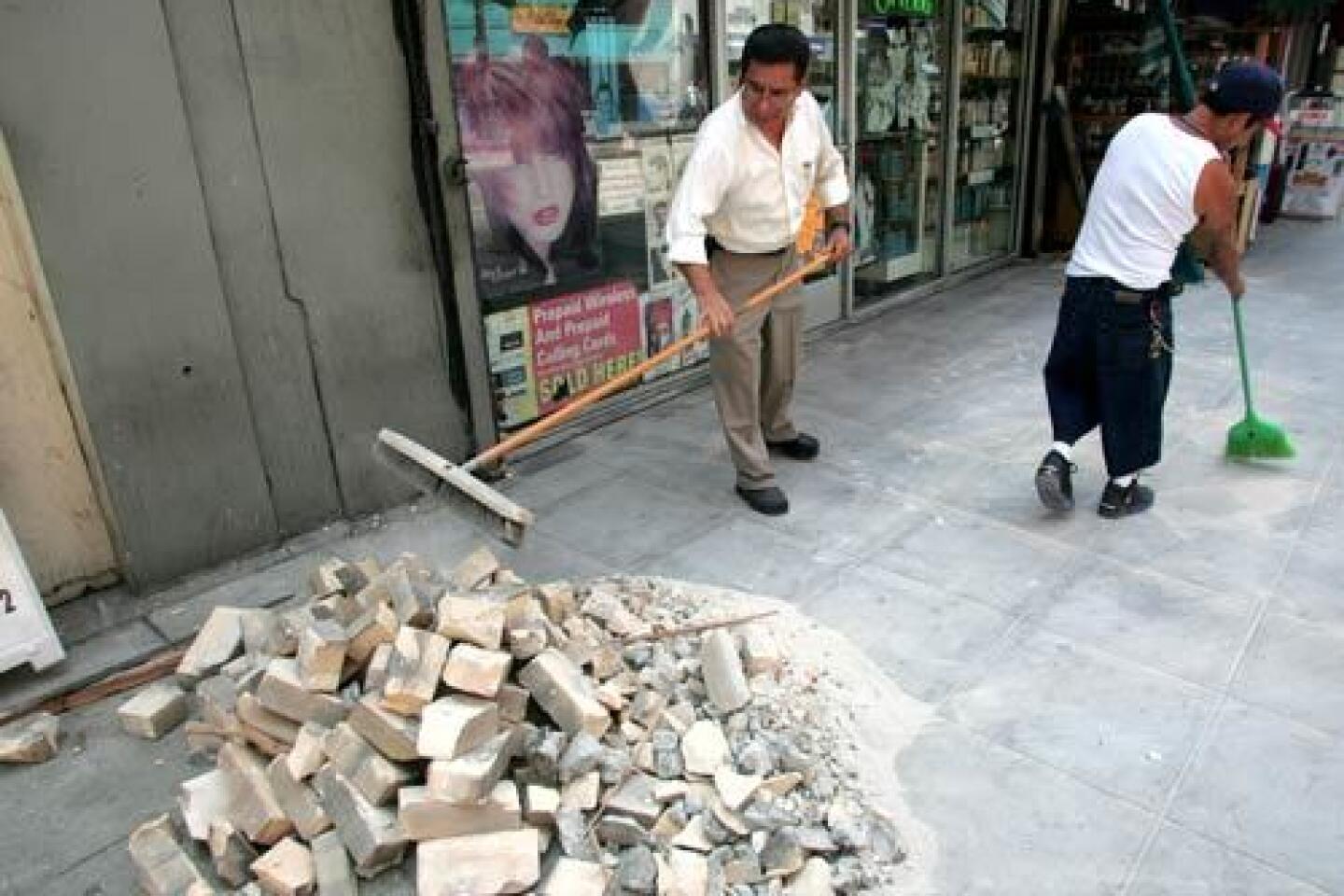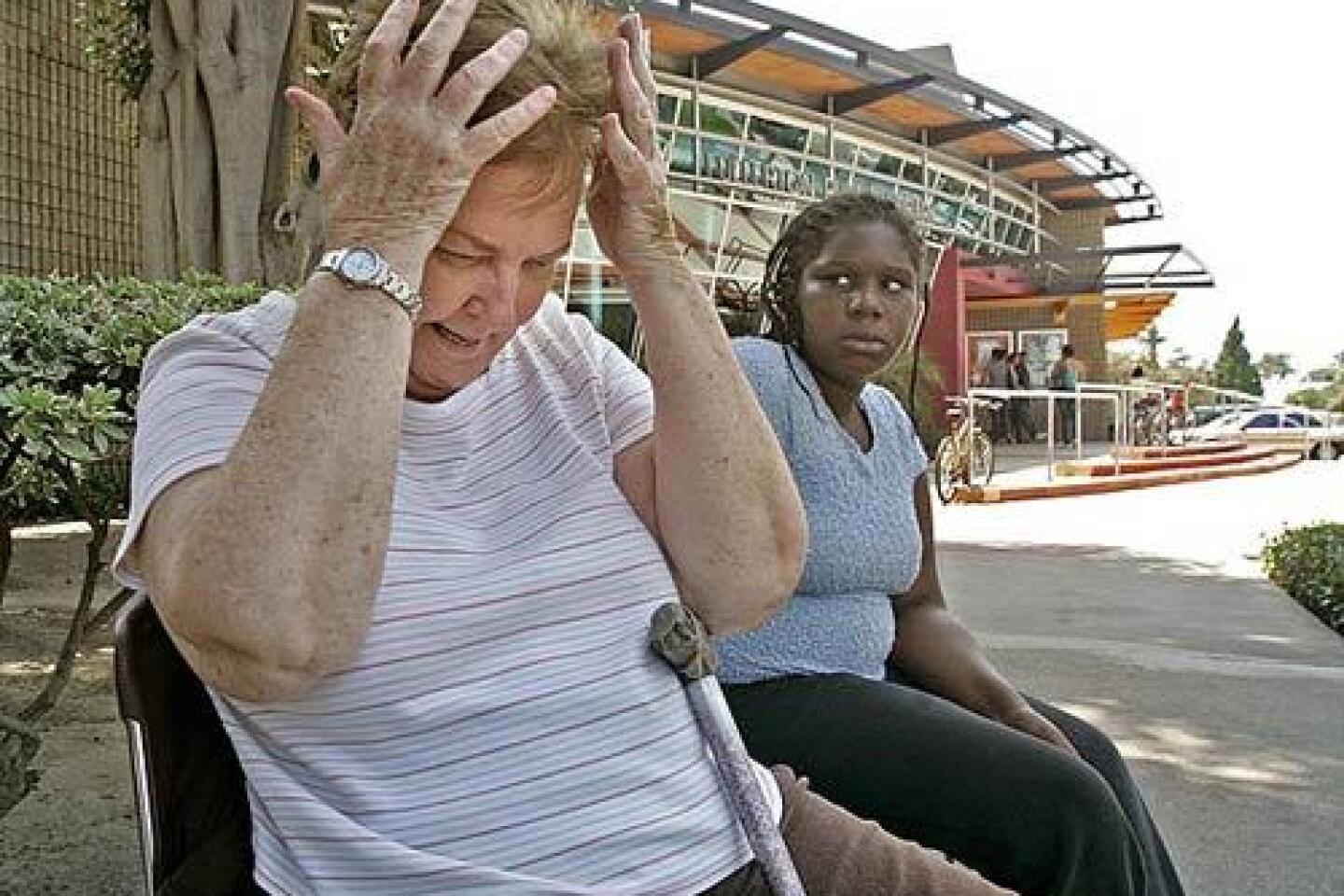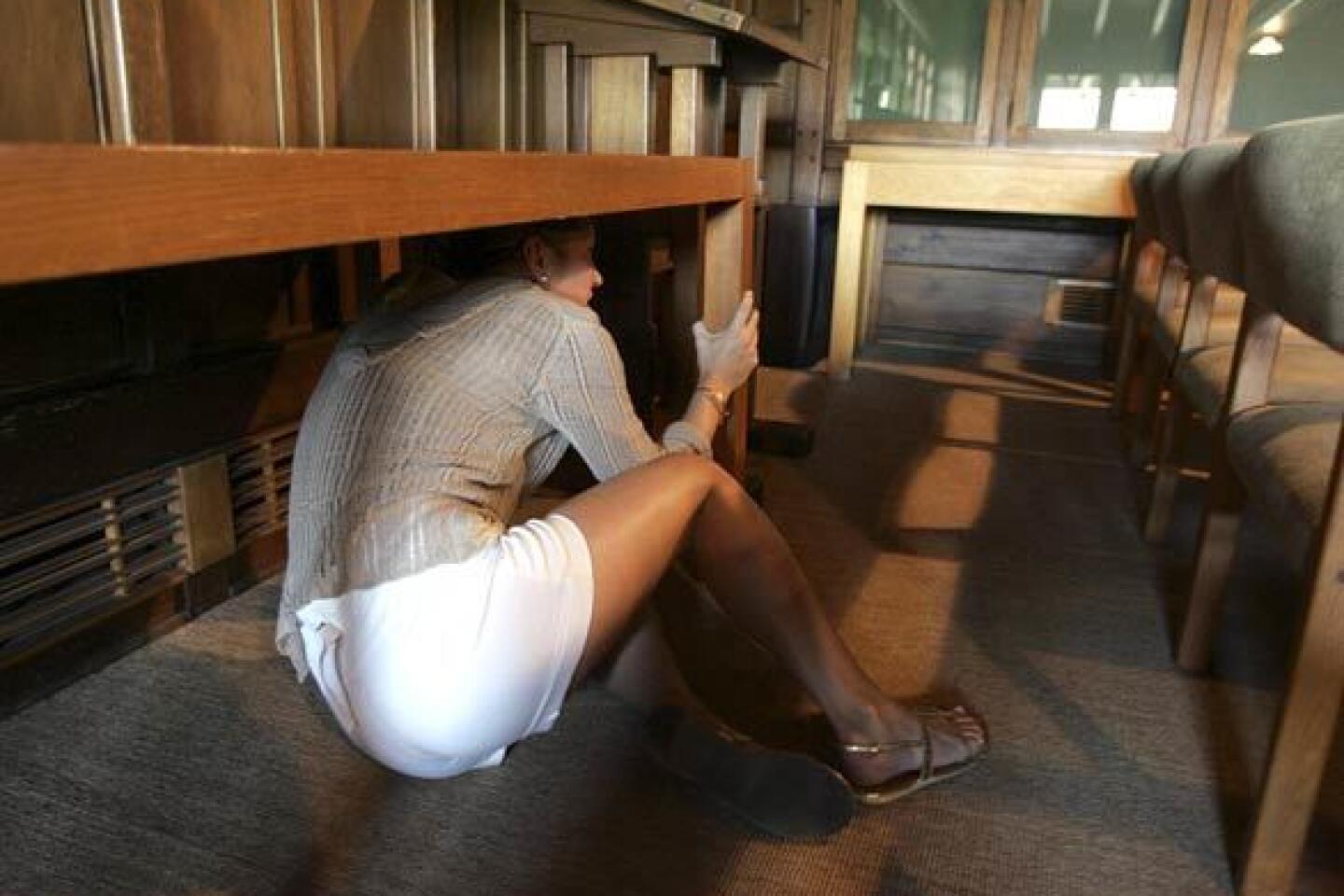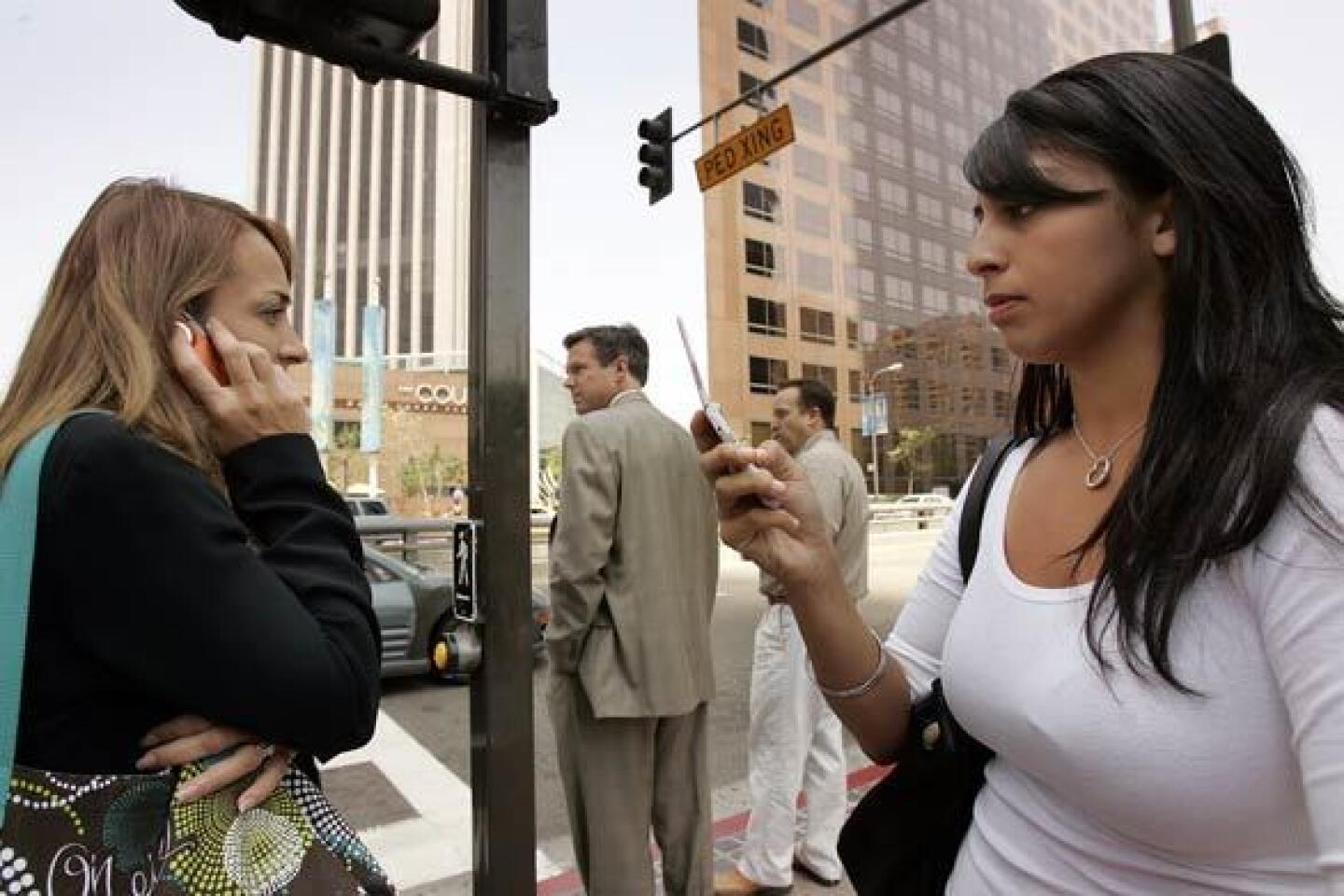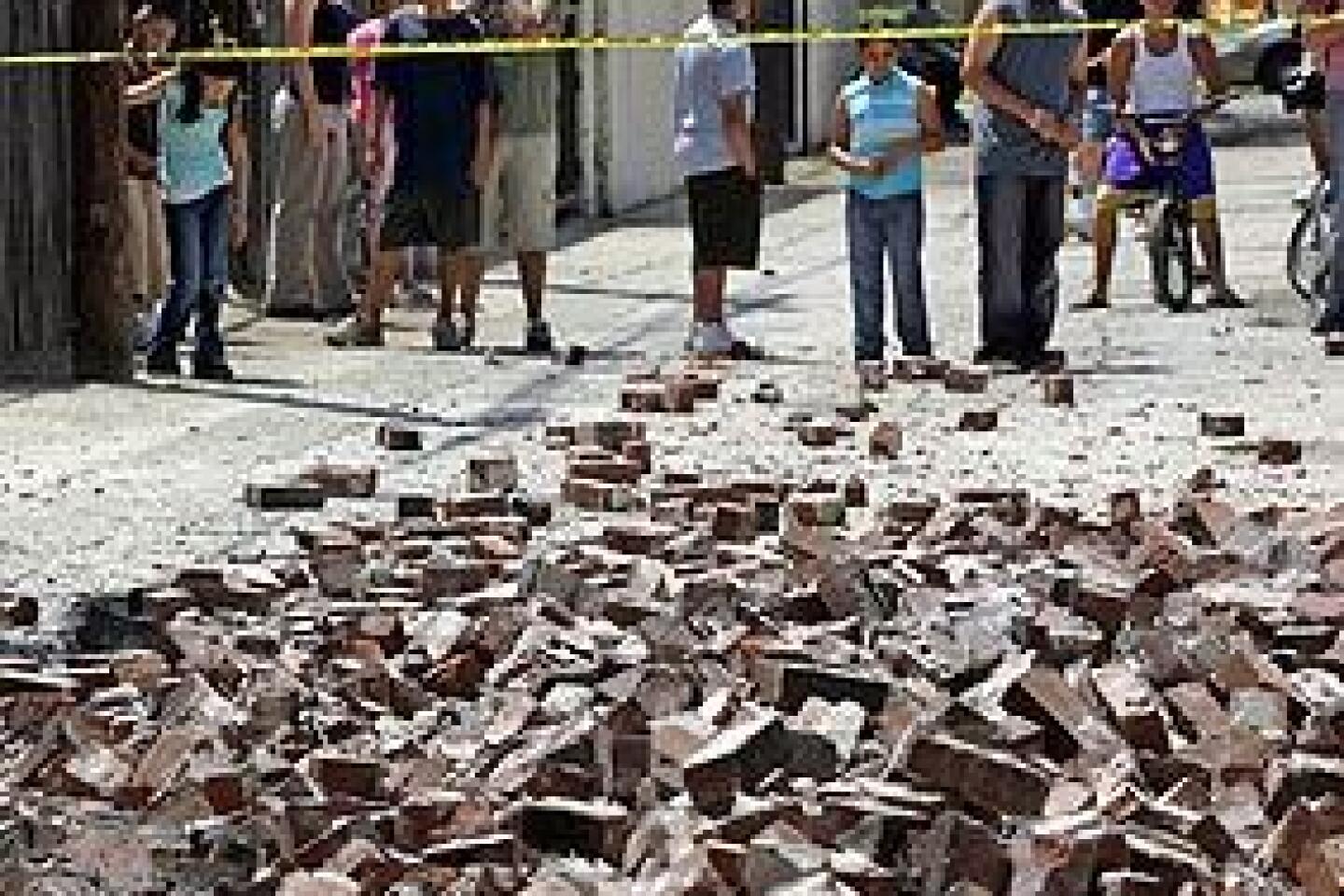5.7 California earthquake, four dozen aftershocks prompt more study
- Share via
The largest earthquake to shake California since 2008 occurred in a less studied area of the state, prompting seismologists to head to the Northern California region with more monitoring equipment, officials said Friday.
Thursday’s magnitude 5.7 quake struck about 8:47 p.m. about 150 miles northeast of Sacramento; its epicenter was about 27 miles southwest of the town of Susanville and seven miles west-northwest of Greenville.
The mountainous eastern Sierra Nevada region, known for its lakes, rivers and national forests, has had about seven magnitude 4 earthquakes since the 1930s, said David Schwartz, an earthquake geologist for the Northern California USGS division in Menlo Park.
Thursday’s quake did occur in a zone where there are known active faults, Schwartz said, including a series of faults that extend through the northern end of Lake Tahoe all the way to Oregon. But magnitude 5.7 is the strongest recorded in this region.
Seismologists are still studying the intensity of Thursday’s ground shaking, and Schwartz said it will be a few days before they can identify with greater certainty which fault the temblor occurred on.
The region’s seismic activity is not as well studied compared to urban areas like Los Angeles or San Francisco, Schwartz said. There are more seismographs in place for these more populated, high-seismic areas, he said.
Since Thursday’s quake, officials have moved some of these instruments to this more rugged region to monitor the aftershocks.
The quake itself was not a huge surprise for Schwartz’s division, but “what was interesting was it was felt along an unusual distance,” he said. “Earthquakes in different parts of the state are felt over different distances. We just haven’t had that many examples of earthquakes in this part of the state, really, for comparison.”
Within minutes of the first quake, more than 7,000 people reported feeling it, from across state borders into Oregon and Nevada and as far south as the San Francisco area, according to the U.S. Geological Survey website.
“I think it was a little bit of a surprise that it was felt so far down into the Bay area,” Schwartz said. “There are more interesting questions now than we have answers for, at present.”
More than four dozen aftershocks, ranging up to a magnitude 4.9 in a zone of about 4 miles by 5 miles, have been recorded since the first quake, according to the USGS.
Schwartz said these aftershocks look to be “fairly standard.” Within the next week, there is a 20% chance an earthquake larger than magnitude 5 will strike the area and a 5% to 10% chance a quake of a magnitude greater than 5.7, according to a USGS probability report released Friday morning.
There have been no reports of injures, Plumas County sheriff’s officials said. About 600 residents lost power for a brief period, and a water tank was ruptured due to the earthquake, affecting up to 1,500 customers.
At least three homes in the area had moderate collapsed chimneys and plaster cracking, authorities said. No structural damage have been reported.
“A 5.7 is still a moderate size earthquake, and earthquakes of that magnitude can occur really anywhere throughout the state,” Schwartz said. “But it’s large enough to generate interest and provide us some real info on how things work. We plan to keep looking at the sequence.”
ALSO:
Two arrested in thefts at Orange County religious sites
Puppy trapped in pipe at Newport Coast home; rescue attempt fails
Environmental group requests hearing process on San Onofre restart
Twitter: @RosannaXia
More to Read
Sign up for Essential California
The most important California stories and recommendations in your inbox every morning.
You may occasionally receive promotional content from the Los Angeles Times.







